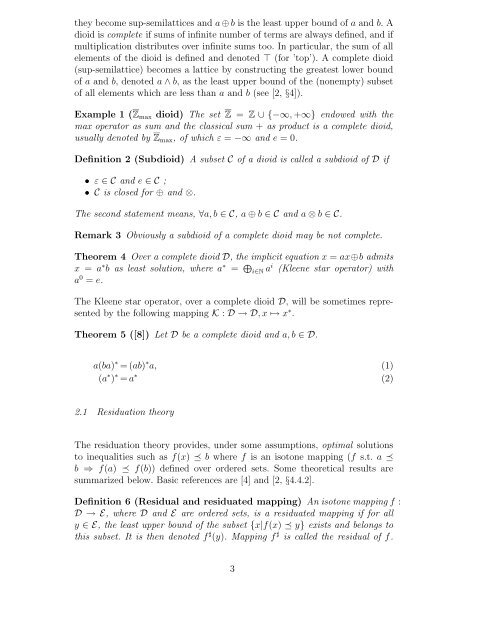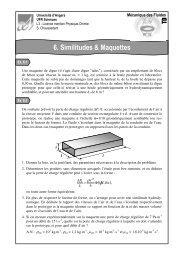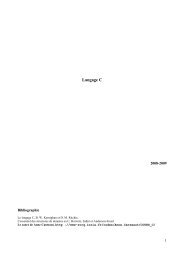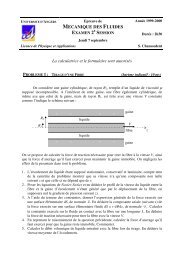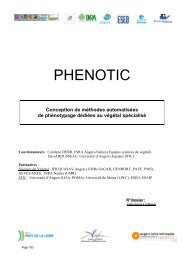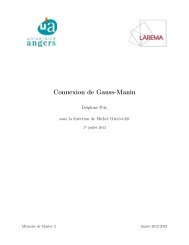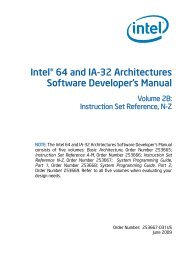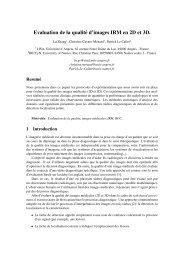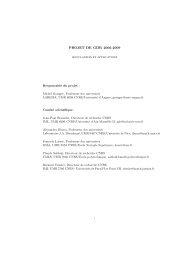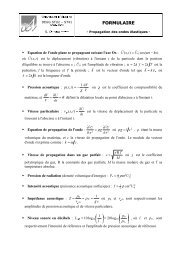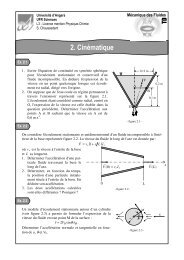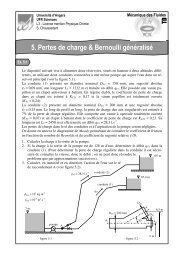Interval Analysis and Dioid : Application to Robust ... - ResearchGate
Interval Analysis and Dioid : Application to Robust ... - ResearchGate
Interval Analysis and Dioid : Application to Robust ... - ResearchGate
You also want an ePaper? Increase the reach of your titles
YUMPU automatically turns print PDFs into web optimized ePapers that Google loves.
they become sup-semilattices <strong>and</strong> a ⊕ b is the least upper bound of a <strong>and</strong> b. Adioid is complete if sums of infinite number of terms are always defined, <strong>and</strong> ifmultiplication distributes over infinite sums <strong>to</strong>o. In particular, the sum of allelements of the dioid is defined <strong>and</strong> denoted ⊤ (for ’<strong>to</strong>p’). A complete dioid(sup-semilattice) becomes a lattice by constructing the greatest lower boundof a <strong>and</strong> b, denoted a ∧ b, as the least upper bound of the (nonempty) subse<strong>to</strong>f all elements which are less than a <strong>and</strong> b (see [2, §4]).Example 1 (Z max dioid) The set Z = Z ∪ {−∞, +∞} endowed with themax opera<strong>to</strong>r as sum <strong>and</strong> the classical sum + as product is a complete dioid,usually denoted by Z max , of which ε = −∞ <strong>and</strong> e = 0.Definition 2 (Subdioid) A subset C of a dioid is called a subdioid of D if• ε ∈ C <strong>and</strong> e ∈ C ;• C is closed for ⊕ <strong>and</strong> ⊗.The second statement means, ∀a, b ∈ C, a ⊕ b ∈ C <strong>and</strong> a ⊗ b ∈ C.Remark 3 Obviously a subdioid of a complete dioid may be not complete.Theorem 4 Over a complete dioid D, the implicit equation x = ax⊕b admitsx = a ∗ b as least solution, where a ∗ = ⊕ i∈N a i (Kleene star opera<strong>to</strong>r) witha 0 = e.The Kleene star opera<strong>to</strong>r, over a complete dioid D, will be sometimes representedby the following mapping K : D → D, x ↦→ x ∗ .Theorem 5 ([8]) Let D be a complete dioid <strong>and</strong> a, b ∈ D.a(ba) ∗ = (ab) ∗ a, (1)(a ∗ ) ∗ = a ∗ (2)2.1 Residuation theoryThe residuation theory provides, under some assumptions, optimal solutions<strong>to</strong> inequalities such as f(x) ≼ b where f is an iso<strong>to</strong>ne mapping (f s.t. a ≼b ⇒ f(a) ≼ f(b)) defined over ordered sets. Some theoretical results aresummarized below. Basic references are [4] <strong>and</strong> [2, §4.4.2].Definition 6 (Residual <strong>and</strong> residuated mapping) An iso<strong>to</strong>ne mapping f :D → E, where D <strong>and</strong> E are ordered sets, is a residuated mapping if for ally ∈ E, the least upper bound of the subset {x|f(x) ≼ y} exists <strong>and</strong> belongs <strong>to</strong>this subset. It is then denoted f ♯ (y). Mapping f ♯ is called the residual of f.3


